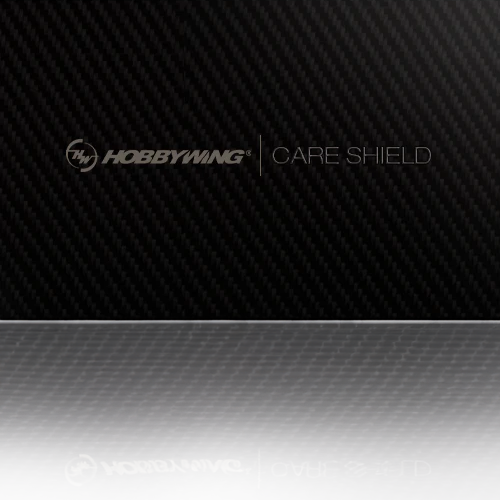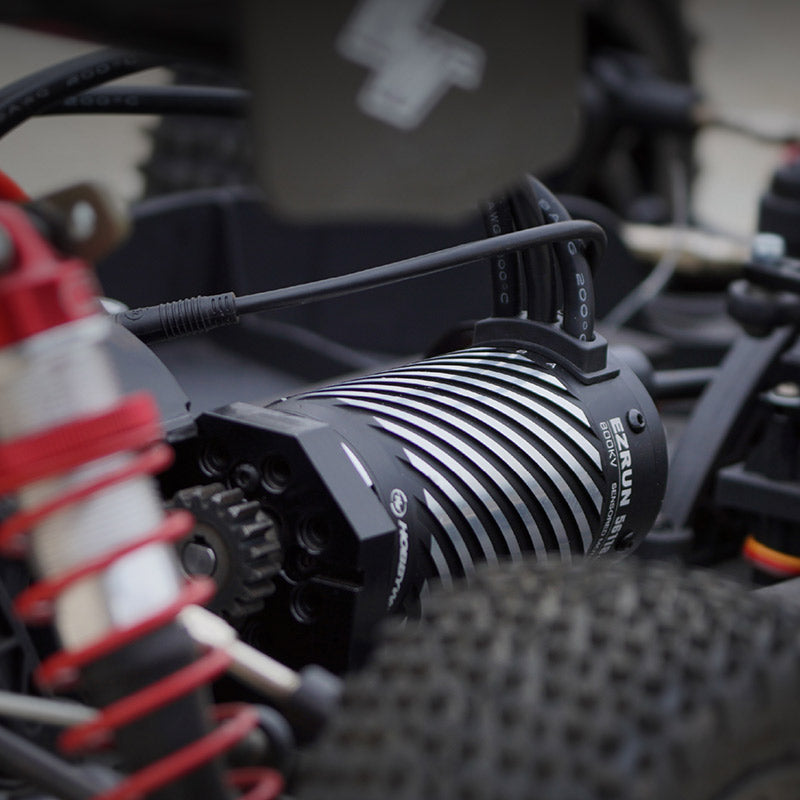Thanks for purchasing the “SEAKING” series of Electronic Speed Controller (ESC) for RC boats. High power system for RC models can be very dangerous, so please read this manual carefully. Because we have no control over the use, installation or maintenance of the speed controller or other related electronics, no liability may be assumed nor will be accepted for any damages, losses or costs resulting from the use of this product. Any claims arising from the operation, malfunction and others will be denied. We assume no liability for personal injury, consequential damages resulting from our product or workmanship. As far as is legally permitted, the obligation to compensate is restricted to the invoice amount of the affected product.

1) Picture 1 is for Seaking-30A-V3, Seaking-60A-V3 and other ESCs that work with one LiPo battery pack; that is a wiring diagram with 1 battery pack.
2) Picture 2 is for Seaking-120A-V3, Seaking-180A-V3, Seaking-130A-HV-V3 and other ESCs that may work with two LiPo battery packs; that is the wiring diagram with 2 battery packs. ATTENTION
Throttle Range Calibration
Turn on the transmitter, set parameters on the throttle channel like “D/R”, “EPA” and “ATL” to 100% (for transmitter without LCD, please turn the knob to the maximum) and the throttle “TRIM” to 0 (for transmitter without LCD, please turn the corresponding knob to the neutral position). For FutabaTM radio transmitter and similar ones, the direction of throttle channel shall be set to “REV”, while other radio systems shall be set to “NOR”. We strongly recommend activating the “Fail Save” function of the radio system and set it (F/S) to “Output OFF” or set its value to the “Neutral Position” to ensure the boat can be stopped when there is no signal received from the transmitter. Note: if the transmitter has the ABS brake function, please disable it.
If you are using a pistol transmitter:
a) Pull the throttle trigger to the top forward position (/full throttle), connect the ESC to the battery pack, then turn the switch on; 2 seconds later, a row of “Beep- Beep-” can be heard, that means the full throttle position has been confirmed. b) Release the throttle trigger to the neutral position, a steady and long “Beep—” can be heard, that means the neutral position has been confirmed.
Note: When the motor emits “Beep” tone(s), the red LED in the ESC flashes at the same time.
If you are using a stick transmitter:
 a) Push the throttle stick to the top position (/full throttle), connect the ESC to the battery pack, then turn the switch on; 2 seconds later,
a) Push the throttle stick to the top position (/full throttle), connect the ESC to the battery pack, then turn the switch on; 2 seconds later,
a row of “Beep- Beep-” tone can be heard, that means the full throttle position has been confirmed.
b) If you want to set it (/the throttle range) to half-range, please move the throttle stick to the neutral position, a steady and long “Beep—” can be heard, that means the neutral position has been confirmed.
If you want to set it to full-range (In such a case, the boat cannot run backward), please pull the throttle stick to the bottom position
(/full brake), a steady and long “Beep—” can be heard, that means the bottom position has been confirmed.
The Normal Start Process
- Move the throttle stick to the bottom position (/full brake), then turn on the transmitter.
- Connect the battery pack to the ESC, the turn the switch on.
- The motor emits several “Beeps” to denote the cells number in your Lipo battery pack. Please make sure that the number is correct. If only one “Beep” tone is emitted, that means the “Low-voltage Cutoff Threshold” (Please refer to the “Programmable Items” in the following form) is set to “No protection”, and it’s only suitable when you are using a NiMH/NiCd battery pack. Please never use the “No protection” mode for Lipo battery; otherwise the Lipo battery will be damaged irreversibly.
- One second later, the motor emits a steady and long “beep—” to confirm the zero-speed position of the throttle. If the throttle is not at that position, the motor will emit the continuous “beep-beep-beep...” till the throttle returns to the zero-speed position.
- Move the throttle stick upwards, the motor starts spinning and speeds up gradually.
Programmable Items
1. Running Mode:

With the “Forward Only” mode, the boat can only go forward; while in the “Forward and Backward” mode, the boat can go forward and reverse, which is suitable for some specially-designed boats. Please read the user manual of your boat to check if it can run backward.
2. Lipo Cells:
We strongly suggest setting the “Lipo Cells” item manually. If you choose the “Auto Calculate”, the ESC will measure the battery voltage the moment it is connected to the controller, then the ESC counts the cells number. For example, if the battery voltage is lower than 8.8V, it will be identified as 2 cells Lipo battery. In order to ensure the ESC calculate the cells number correctly, please always use a fully charged battery to connect the ESC. If the battery is not fully charged or partly discharged, then the “Auto Calculate” may get a wrong result. Hint: In the startup process, the motor will emit several “Beeps” to indicate the Lipo cells number; it is helpful for you to check if it is consistent with the actual cells number in your battery pack. If you often use Lipo battery packs with the fixed number of cells, then we strongly suggest you to set the “Lipo Cells” to a fixed value instead of using the “Auto Calculate”, as this can ensure the low-voltage cutoff protection works normally all the time.
3. Low-voltage Cutoff Threshold:
This function prevents the Lipo battery pack from over-discharging. The ESC detects the battery voltage all the time, if the voltage goes below the threshold for 2 seconds, the output power will be halved and the Red LED flashes slowly, then please replace the battery pack as soon as possible.
- Warning! If you ignore the low voltage cutoff warning and keep running, the Lipo battery will be damaged irreversibly!
- How to calculate the cutoff threshold of a battery pack: The cutoff threshold of a battery pack = the threshold of each cell x cells number For example, if the threshold of each cell is set to “3.2V/Cell”, and the battery pack is a 3S (3 Cells), then the cutoff threshold of this battery pack is 3.2x3=9.6V. C) If you are using a NiMH or NiCd battery: NiMH and NiCd batteries are not easy to be damaged, so you needn’t worry about the over-discharging problem, you can set this programmable item to “No Protection”.
4. Timing:
Please select the most suitable timing option according to the motor you are using. The correct timing makes the motor run smoothly. Generally speaking, higher timing brings out higher output power, higher speed and also higher temperature
Program the ESC with your transmitter
By 4 Steps: Enter the programming mode → Select programmable item(s) → Choose a new value for the selected item → Exit
STEP 1.
-
Enter the programming mode 1.
Switch on the transmitter, move the throttle stick to the top position (/full throttle), and then connect the battery pack to the ESC.
-
Turn on the ESC, wait for 2 seconds, the motor emits “Beep-Beep-” tone.
- Wait for 5 more seconds, the motor emits a special tone “56712”, that means the controller enters the programming mode.
STEP 2.
Select programmable items After entered the programming mode, you will hear the following 4 kinds of “Beep” tones circularly. If move the throttle stick to the bottom position (/full brake) within 3 seconds after one kind of “Beep” tone emits, then the corresponding item will be selected.
- “Beep-”, Running Mode (1 short “beep”)
- “Beep-Beep-”, Lipo Cells (2 short “beeps”)
- “Beep-Beep-Beep-”, Low-voltage Cutoff Threshold (3 short “beeps”)
- “Beep-Beep-Beep-Beep”,Timing (4 short “beeps”)
STEP 3.
Choose a new value for the selected item After entered a certain item, the motor will beep in a loop. Set the corresponding value by moving the throttle stick to the top position (/full throttle) when you hear the tone, then a special tone “1515 ” emits, which means the value has been chosen and saved into the ESC. (If keep the throttle stick at the top position (/full throttle) for over 2 seconds, you can return to STEP 2 and set other items; if move the stick to the bottom position (/full brake) within 2 seconds, then you will exit this programming mode directly.)

STEP 4.
Exit the programming mode
There are 2 methods to exit the programming mode:
- In STEP 3, the motor emits the special tone “1515” after chosen the value, at this moment user can move the throttle stick to the bottom position (/full brake) in 2 seconds to exit the programming mode.
-
Disconnect the battery pack from the ESC to exit the programming mode forcibly.
Program card is an optional equipment for boat ESCs, it has 3 digital LEDs to display the programmable items and corresponding parameter values, so the user interface is very intuitive. The SEAKING-30A-V3 ESC uses the throttle cable to connect to LED Program Card, while other SEAKING V3 ESCs use the External Programming Ports to connect LED Program Card.
Low Voltage Cutoff Protection:
When the battery voltage falls below the preset cutoff threshold for over 1 second, the ESC will cut off the output and stop working, then the Red LED blinks slowly. The controller can be reoperated at the halved power after the throttle returns to zero.
Overheat Protection:
when the ESC temperature goes above the factory preset value, the ESC will cut off the output and stop running, then the Green LED flashes slowly. The controller can be reoperated at the halved power after the throttle returns to zero, the output will resume if the temperature decreases below 80°C.
Throttle Signal Loss Protection:
When the receiver detects no throttle signal (from the transmitter) for over 0.1 second, the ESC will cut off the output. The controller will not resume running until the signal is detected again. Hereby, we suggest users setting the no signal protection (or F/S protection value) on the TH channel (on the transmitter) to “Output off” or “Neutral position”.
LED Indications
There are two LED indicators in the ESC,a Green one and a Red one.
- When the throttle is above "0" speed position, Red LED light will come on and the motor starts to spin; while pushing the throttle to the max position (/full throttle), RED and Green LEDs light up.
- When setting the throttle range and parameters of the ESC, the motor beeps and Red LED flashes simultaneously for easy observation.
- Green LED blinks slowly denoting the ESC has entered the overheat protection, Red LED flashes slowly means the Low-Voltage Cutoff Protection is activated.
SEAKING ESC Trouble Shooting
SEAKING ESC, After powered on, the motor doesn’t emit any beep tone and the LED doesn’t light up.
Possible causes: No battery voltage is inputted to the ESC or got the polarity reversed.
Solution(s):
Check the connection between the battery and ESC, please re-solder if poor soldering exists. If the polarity is reversed, please cut off the power immediately. Otherwise, the ESC will be damaged irreversibly.
SEAKING V3 ESC, After powered on, the motor doesn’t work, but the following alert tone is emitted: “beep-beep-, beep-beep-” (here the time interval is 1 second).
Possible causes: The battery voltage is abnormal; or the startup temperature of the ESC is above 80°C.
solution(s):
Check the battery voltage; Check whether the water cooling system runs smoothly or not, or change another ESC with greater amperage capability.
SEAKING ESC, The boat cannot run backward.
Possible causes: The ESC is not set to “Forward and Backward” running mode; The ESC cannot recognize the throttle neutral point.
Solution(s):
Set the running mode to “Forward and Backward”; recalibrate the throttle range according to instructions in the section of "Throttle Range Calibration"
SEAKING ESC, The power suddenly got weaken in the motor rotating.
Possible causes: The Low-Voltage Cutoff Protection or the Overheat Protection is activated.
Solution:
Replace another fully-charged battery; Cool the ESC down before using it again.
The motor cannot be started normally, and it only stutters.
Possible causes: The ESC and motor wire are not well connected or the ESC / motor is damaged
Solution(s):
Check all the connections; replace the ESC or the motor. (Note: please test with a small throttle value first, then increase the value after the motor returns to normal. Otherwise, the ESC/motor may get damaged again.
How to program SEAKING 130A HV ESC with using a program card?
First, please make sure that you are using the correct program card: >>
here.Programing SEAKING 130HV, requires 4.8 to 6v receiver pack to power program card.
- There are 2 control wires on the ESC, the long one is used to connect to the receiver, the short one is used to connect with program box.
- You must supply the program box with an additional battery because the Seaking-130A-HV ESC has no bulid-in BEC.
- Please follow the sequences as below
a. Connect the program box with the ESC through the programming wire (shorter wire).
b. Connect the battery pack (4.8V to 6V) to the Program box. Box will light up with " - - - "
c. connect main battery pack to the ESC. A few seconds after you plug in the main batteries the " - - - " lightings will switch to "1 1"
IMPORTANT! Steps a to c cannot be reversed.
- Program as needed
NOTE: For programing Seaking V3 ESC, a ker-1006 extension wire may be required.
You can program it without the program card. please try that first.
the instruction is described under "Program the ESC with your transmitter" above.







 a) Push the throttle stick to the top position (/full throttle), connect the ESC to the battery pack, then turn the switch on; 2 seconds later,
a) Push the throttle stick to the top position (/full throttle), connect the ESC to the battery pack, then turn the switch on; 2 seconds later, With the “Forward Only” mode, the boat can only go forward; while in the “Forward and Backward” mode, the boat can go forward and reverse, which is suitable for some specially-designed boats. Please read the user manual of your boat to check if it can run backward.
With the “Forward Only” mode, the boat can only go forward; while in the “Forward and Backward” mode, the boat can go forward and reverse, which is suitable for some specially-designed boats. Please read the user manual of your boat to check if it can run backward.



